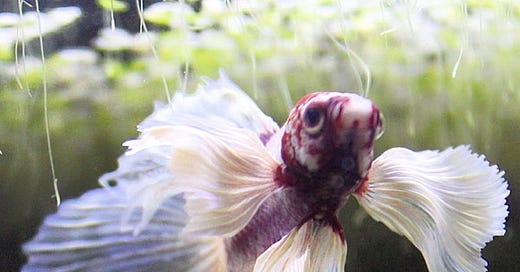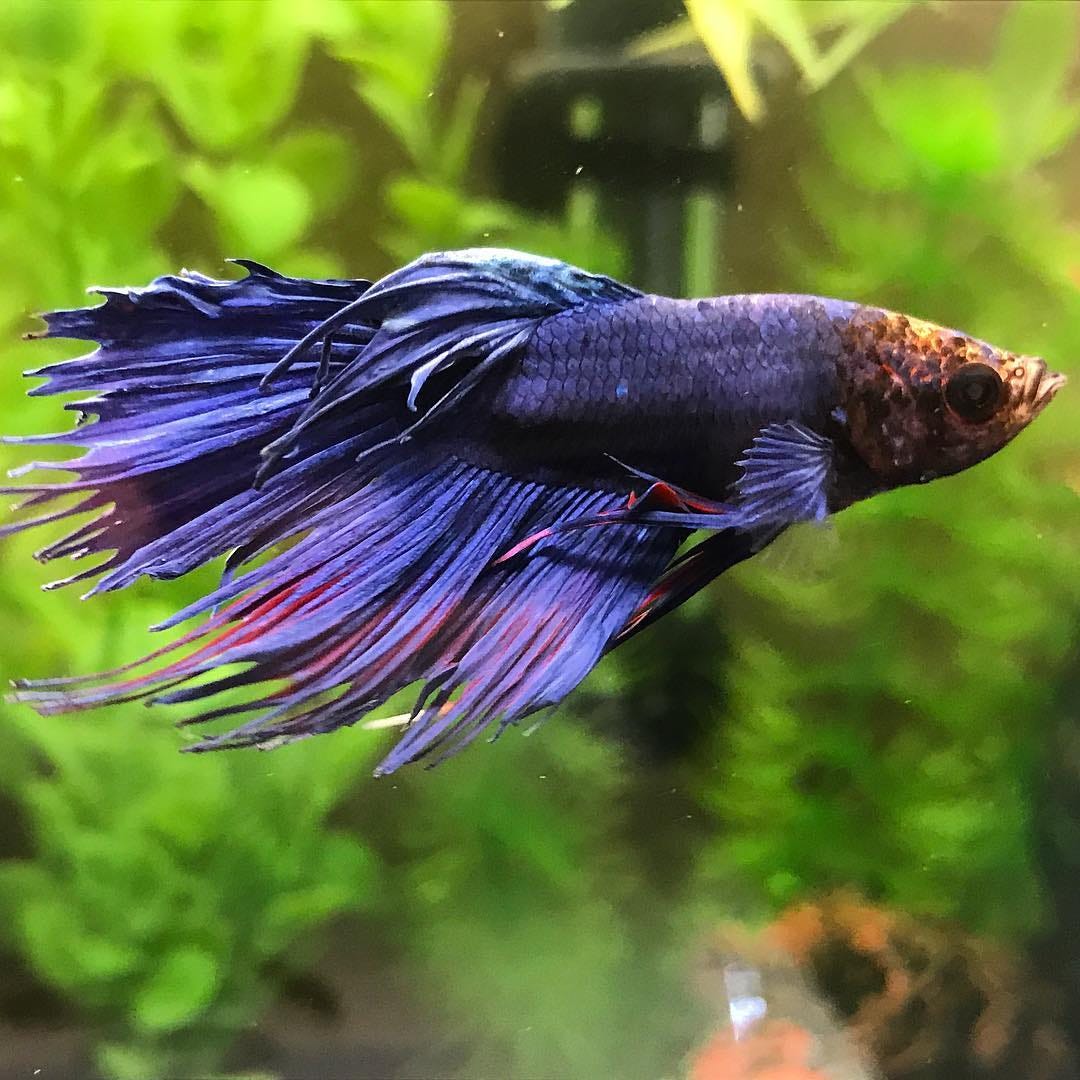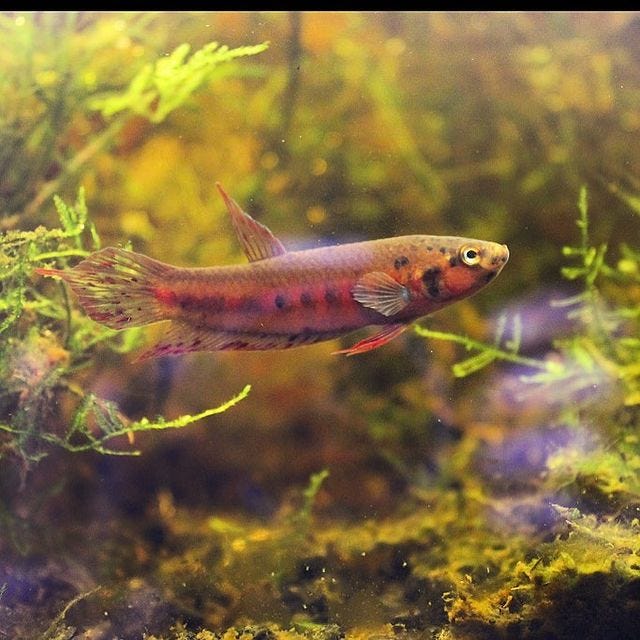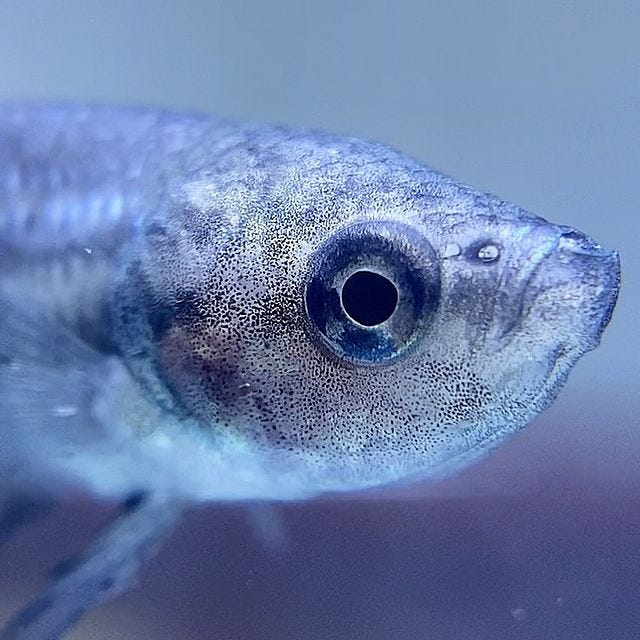From the OG Betta Rescue Jessiel Bettas-- An Introduction to Comprehensive Betta Fish Health
A Complete Guide to Over 7 Years' Worth of Specialized Betta Health Care
Aug 22, 2022
Silver, age 3 years, six months.
Synopsis:
After over seven years of compiling data and inventing creative and effective treatment plans, it’s at long last time to compile all of my knowledge in one place to share with the world. I intend for this compilation to be easy to access, easy to understand, and easy to navigate. The goal will be simple— educate other fish keepers in a variety of fish diseases, conditions, afflictions stemming from injury or behavioral issues, to even oddballs such as genetic predispositions and cancers. And yes, even how to successfully combat the dreaded Dropsy. This newsletter will explore a wide range of fish health topics, covering the basic care and keeping of my three main target species: the domestic Betta Splendens, the wild Betta Rubra, and domestic fancy goldfish. After covering the basics, topics will begin to dive into the specifics of individual issues and how best to identify and react to different problems.
All general information and detailed diagnostic tools will be freely available. All treatment plans and assembled health information will be shared openly. Only specific betta cases that I myself have worked will be available with a $5 subscription in order to protect some of my personal information online. In the interests of saving bettas I will not be hiding any life-saving information behind a paywall in any way, shape, or form. And as always, my Instagram DM Betta Health Hotline @Jessiel.bettas will be available for health emergencies.
The Introduction:
I began my fish keeping journey on the first day of my Freshman Year at college. While at Wal-Mart shopping for dorm supplies, I spotted a row of bettas on a shelf in the pet section (yes, this was back before Wal-Mart banned the sale of live fish, a movement which I am proud to be a part of). One of these bettas was on his side at the bottom, gasping for breath and clearly in the process of dying. My dorm building strictly enforced a no-pets rule, but bettas in small tanks were the exception and watching him struggle tugged at my heart, so I picked him up and added him to my shopping cart. They gave him to me for free due to his mostly-dead condition, and I named this betta Eri, my first rescue betta. He went on to give me an immediate comprehensive crash-course in betta health and keeping because he was determined to die and I, a new Animal Science pre-vet pathway major, was just as determined that he would live.
Eri in his cradle
Eri was mostly immobilized and unable to swim, so I constructed for him a tiny betta cradle to hold him closer to the surface so that he could breathe, a prototype for my more well-known sock betta cradles from today. I hand-fed him every night since he could not eat on his own. His eye was ulcerated and bleeding, plus he had internal parasites. It took weeks of stressful trial-and-error for me to rehabilitate him, but Eri went on to swim normally and live a remarkably long life with his scarred eye and beat-up fins.
Eri at three years old
He was my first betta and he ignited in me a passion for saving these tiny fish.
The Roadblocks:
Saving Eri was not an easy task. I knew nothing of bettas at all, so the first thing I did was jump head-first into research. Which is where the problem lives— all of the information I could find online about betta health was either strictly about betta keeping with no mentions of healthcare at all, or wildly contradictive of what other sources cited. And there was no detail about anything that was betta-specific since bettas are not considered a commercially-important species and the grant money for funding research tends to go to more profit-worthy species such as channel catfish and tilapia. I know things have changed some in the last seven years, but back then betta health care was a complete blank slate.
To me this was a frustrating new frontier of medicine. I poured myself into the research, tackling everything from basic betta maintenance to the mechanics behind pineconing. I found my true passion for learning was best applied in the way that I was used to in school— with verified research and self-conducted experiments, both of which were nearly non-existent for the tiny betta fish. Another issue I ran into repeatedly was that none of the data out there was usable outside of a lab setting. It seemed that betta health had trouble existing in the real world outside of high academia and was of little help for the ailing family betta or pet-store reject.
Benny, Betta Rubra male
The Solution:
I threw away anything online I found from other hobbiests as I often found their information was either dated, biased, or patently inaccurate. As such, I’m mostly self-taught when it comes to betta health. All treatment plans and procedures are of my own design or invention. Techniques such as my Oxygen-Therapy Bubble Chamber were adapted from things that I learned in pre-vet healthcare. Theories behind certain betta diseases and conditions were developed during years of working at an animal hospital as an ER tech. Links between tail types and betta lines come from over 700 individual cases that I’ve been working on for years. My data and information comes directly from hands-on betta cases that I have either personally worked on or worked on via my DM Hotline on Instagram which has been up and running for betta health crises for five years.
I have made myself an expert. I have used my compassion and drive to build a betta rescue from the ground up. I have seen everything under the sun about betta health. And I am ready to share what I have learned with the world so that together we can help make a difference in the lives of fish everywhere.
One fish at a time.
Punk, latest betta rescue, pictured while ghosted.
If you liked this post from Jessiel's Newsletter, why not share it?
© 2022 Jessie Lynn Billington
548 Market Street PMB 72296, San Francisco, CA 94104










Fantastic!!!